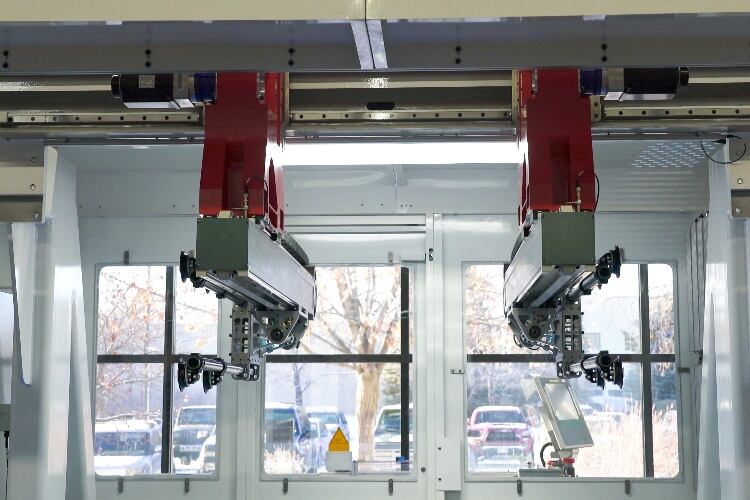Current automation systems are usually restricted to certain molds and specified cavitation, Muller told DairyReporter. But the company’s new M-Line expands the window of applications for packaging manufacturers.
Its flexibility allows processors to adapt to market fluctuations and changing production volumes, and achieve higher machine utilization. The M-Line has three different models for various injection machine sizes.
Muller said the machine fills a need in the processing space because the business has changed. Big brand owners used to agree to longer, three- to five-year contracts, but now deals change almost every year.
The processors need to be able to dedicate automation for different molds, because they don’t know if the need will last. They might run one mold for a year, and then have to run something completely different on the same machine, according to Muller.
Evolving for sustainability and energy consumption
The M-Line robot can run anything that will fit into the molding machine, and is an evolution from previous designs. It is simpler to maintain and smaller in footprint, not taking up as much floor space as previous machines.

Muller said the robot can increase machine utilization to near 90%, compared to the current standard of sub-80% utilization rates.
John Taggert, VP of engineering for Muller Technology, said, “Our newly designed M-Line provides an unprecedented level of flexibility and versatility that significantly raises machine output and efficiency.”
Containers and lids are what it’s used most for, though it adapts to any rigid container, like single serve yogurt cups or milk cartons. Because these are side-entry robots, the M-Line goes next to a molding machine and can handle different centerline heights.
While designing the machine, sustainability and energy consumption were key factors. It’s completely electrical and runs on motors, rather than pneumatics which can leak and use expensive compressed air. Motors only use power when they’re completing a function and do not waste energy.
“We focused on using the motors to reduce the overall energy consumption of the robot,” Muller said.
Thus far Muller has sold seven M-Lines in North America, though they are available on the global market. They are currently being manufactured both at Muller’s Colorado headquarters and in Switzerland.
Muller believes it appeals most to those with scheduling roles in factories. In the past, dedicated robots could only run one mold. So if production isn’t needed on that mold, it’s standing idle and costing money. The M-Line can move any mold where production is needed, run it for any amount of time and move on to something else.

